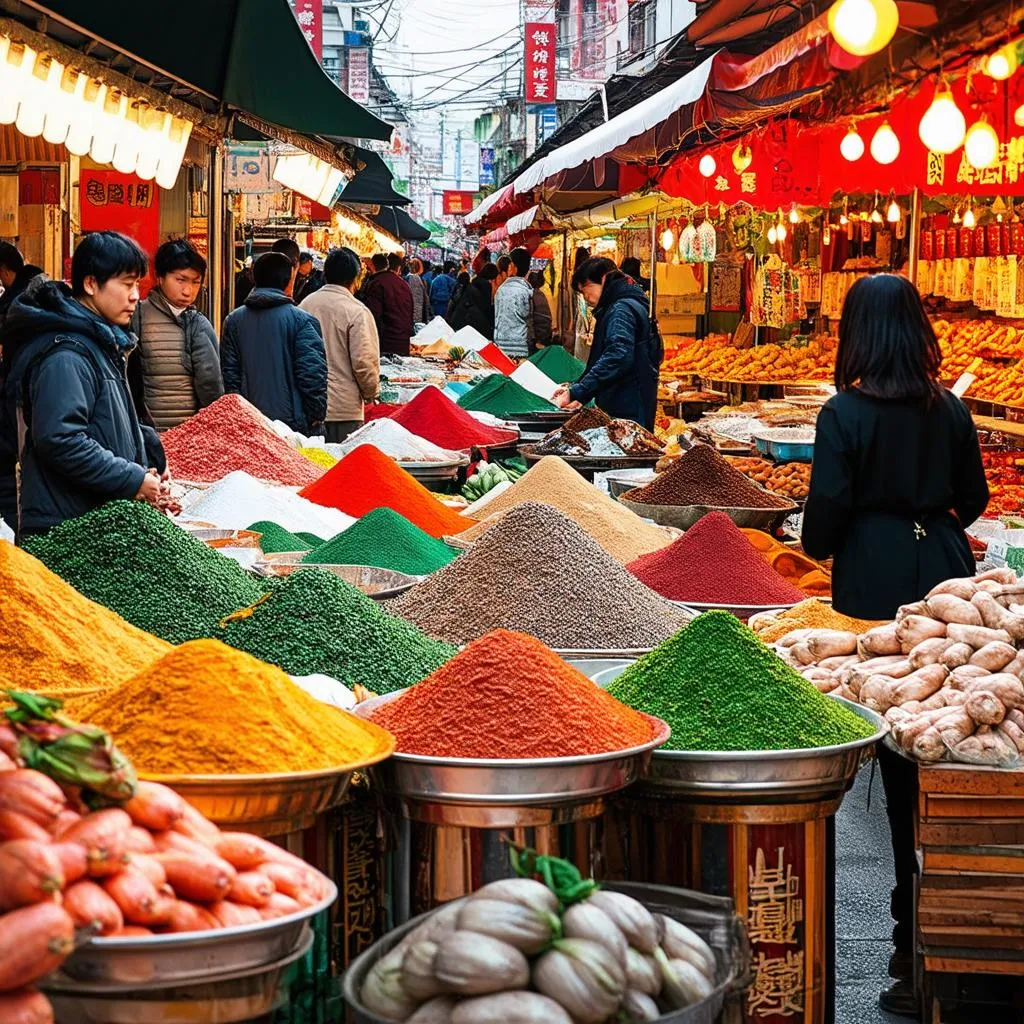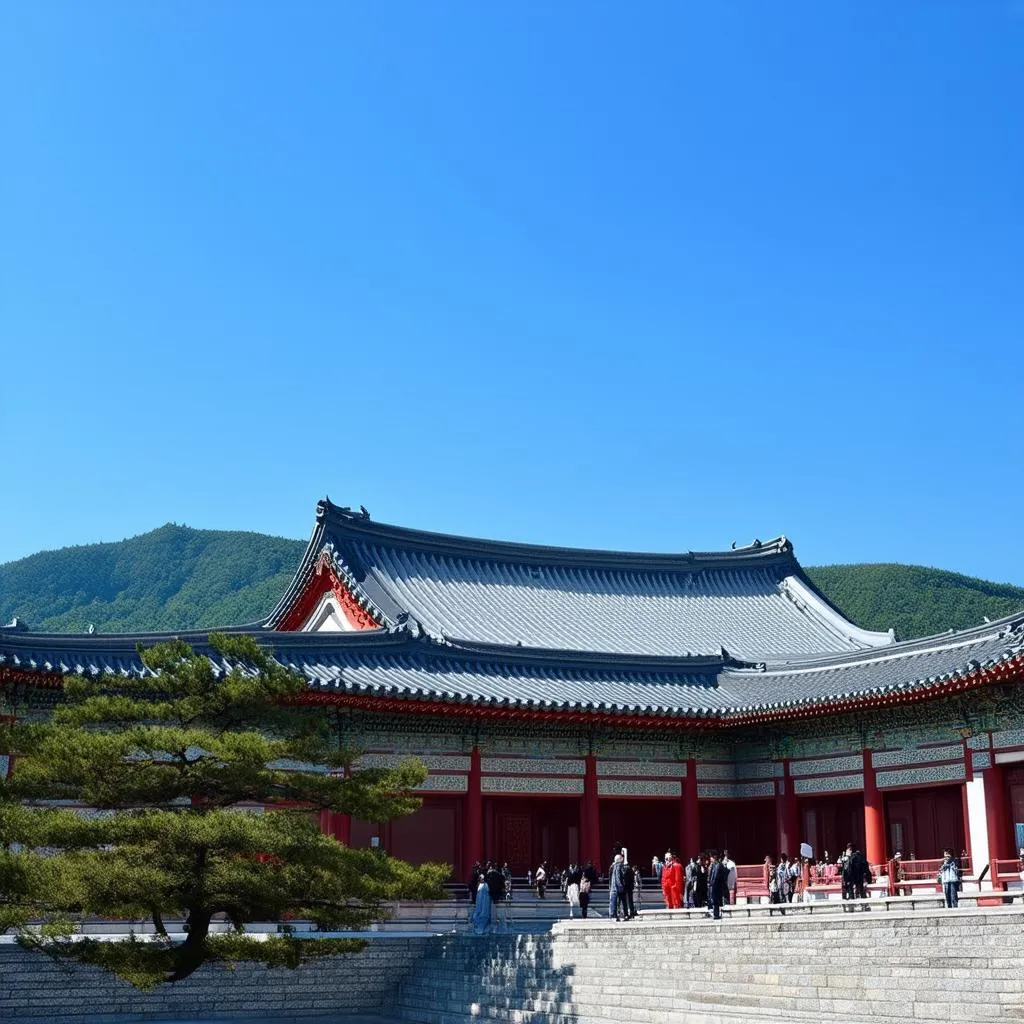Have you ever dreamt of wandering through the vibrant streets of Seoul, indulging in delicious Korean BBQ, or marveling at the architectural wonders of Gyeongbokgung Palace? Learning some basic Korean phrases can transform your trip from a simple visit into an immersive cultural experience.
Even if you don’t achieve fluency, knowing a few essential Korean travel phrases can greatly enhance your trip. Imagine navigating the bustling markets of Namdaemun, confidently ordering food in a local restaurant, or asking for directions to the serene Bukchon Hanok Village – all in Korean! Not only does it make logistics smoother, but it also shows respect for the local culture and can lead to more authentic interactions with the Korean people.
Unlocking the Language Barrier: Why Learn Korean Travel Phrases?
While many Koreans, especially in tourist areas, may speak some English, don’t expect everyone to be fluent. Learning basic Korean demonstrates your willingness to engage with their culture and can lead to more welcoming interactions.
Dr. Ji-Soo Kim, author of “Beyond the Phrasebook: Cultural Fluency for Travelers,” states, “Even a simple ‘Annyeonghaseyo’ (Hello) can open doors to meaningful connections. It shows you’re making an effort, which locals truly appreciate.”
Essential Korean Phrases for Your Travel Itinerary
Here’s a handy guide to essential Korean travel phrases, categorized for easy reference:
Greetings and Essentials
- 안녕하세요 (Annyeonghaseyo): Hello
- 감사합니다 (Kamsahamnida): Thank you
- 죄송합니다 (Joesonghamnida): Sorry/Excuse me
- 네 (Ne): Yes
- 아니요 (Aniyo): No
- 잘 모르겠습니다 (Jal moreugesseumnida): I don’t understand.
- 어디에 있나요? ( eodie innayo?): Where is the ___?
Getting Around
- 저는 가고 싶어요 (Jeoneun gago sipeoyo): I want to go to ___.
- 버스 정류장이 어디에요? (Beoseu jeongryu-jangeo eodieeyo?): Where is the bus stop?
- 지하철 역이 어디에요? (Jihacheol yeogi eodieeyo?): Where is the subway station?
- 표를 사고 싶어요 (Pyoreul sago sipeoyo): I want to buy a ticket.
Dining and Shopping
- 이거 얼마예요? (Igeo eolmayeyo?): How much is this?
- 메뉴 주세요 (Menyu juseyo): Menu, please.
- 맛있어요! (Masisseoyo!): Delicious!
- 계산해 주세요 (Gyesanhae juseyo): Bill, please.
 Korean Food Market
Korean Food Market
Planning Your Korean Adventure: Tips and Resources
- Start Early: Even learning a few phrases a day can make a difference.
- Use Language Apps: Apps like Duolingo, Memrise, and HelloTalk offer interactive lessons and language exchange opportunities.
- Immerse Yourself: Watch Korean dramas, listen to K-pop music, and try cooking Korean food to familiarize yourself with the language and culture.
Travelcar.edu.vn: Your Gateway to Korea and Beyond
For expert guidance on planning your Korean adventure, visit travelcar.edu.vn. We offer insightful travel guides, tips for navigating the visa process, and resources for booking flights and accommodation.
Frequently Asked Questions
- Is English widely spoken in South Korea?
While you’ll find English speakers in tourist areas and major cities, learning basic Korean can significantly enhance your travel experience. - What is the best time to visit South Korea?
Spring (April-May) and autumn (September-October) are popular times to visit due to the pleasant weather and beautiful foliage. - Do I need a visa to visit South Korea?
Visa requirements vary depending on your nationality. Check with your local embassy or consulate for the most up-to-date information.
 Gyeongbokgung Palace
Gyeongbokgung Palace
Embracing the Journey: More Than Just Words
Learning a few Korean phrases is not just about practicality; it’s about embracing the spirit of adventure and showing respect for the local culture. It can lead to richer experiences, deeper connections with the Korean people, and unforgettable memories.
Ready to embark on your Korean adventure? Head over to travelcar.edu.vn for comprehensive travel guides and inspiration!